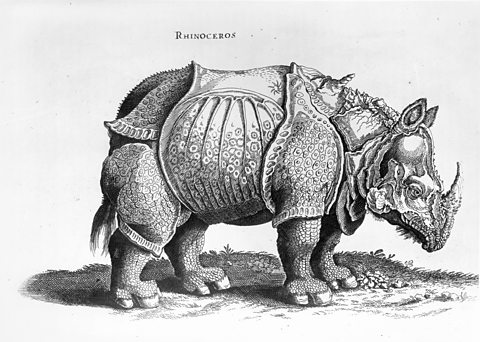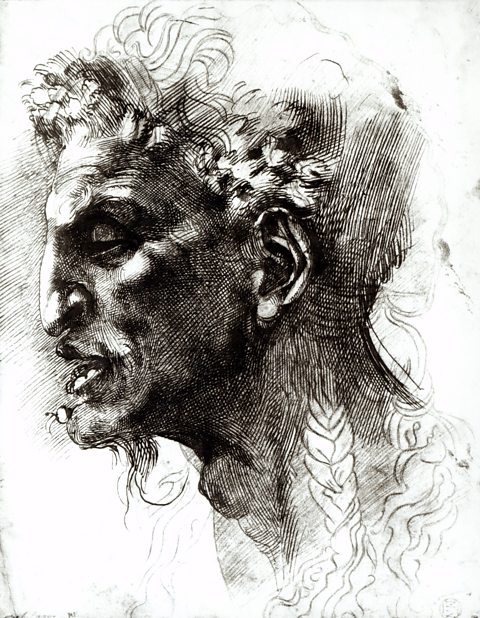Descriptive lines
Descriptive lines tell us more about a subject. They help make a shape look more like a three-dimensional object by showing light, shade and texture.

In The Rhinoceros (c.1515), Albrecht Durer uses lines to describe how he imagines the animal would look and feel.
Thin contour lines show the overall form and the outline of sections of armoured shell. More detailed lines that are close together, combine to show hard ridges, spikey hair and areas of smooth and rough texture. The overall effect is that the shell looks heavy, hard and bulky even though it is a drawing on a flat page.

This pen and ink drawing, Portrait of Jeanne Duval (Charles Pierre Baudelaire, mid 19th century) uses thick black contour lines to show the shape of the woman and her clothes.
Light and shade is described using hatchingA drawing technique where shade or tone are created using closely-spaced lines and cross-hatchingA drawing technique where shade or tone are created using crossing lines. lines.
Thin lines are used to create the detail of the woman’s features. Her face appears delicate in contrast to the bold lines around it.


In Head of a Satyr (c.1500 - 1505), Michelangelo shows form with areas of light and shade and lines that suggest facial features, the curves round the neck, and curling hair.
Hatching and cross-hatching is used descriptively. The lines are drawn very close together on the face. This makes it look hard and solid.
In contrast the lighter areas and small number of lines suggest the softer texture of the satyr’s hair.
